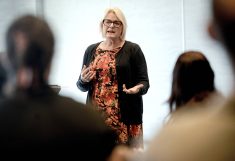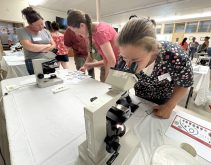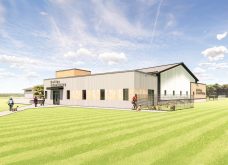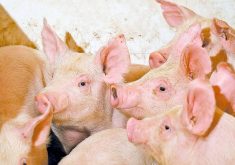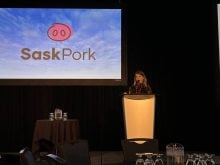Euthanasia is one of those topics no one likes to talk about, but it’s a harsh reality on the farm.
“Most importantly, it’s an animal welfare issue,” said Dr. Sue Burlatschenko, swine veterinarian with Goshen Ridge Veterinary Services. She’s identified a significant knowledge and training gap in the industry when it came to properly euthanizing farm animals.
“There is limited training in the field, and what little there is, is usually conducted on-farm with producers training their own employees.”
Read Also

Dissolving eartags could make pig traceability easier
A dissolving eartag for market hogs, called Clean Trace could reduce processing challenges and enable more individual management of pigs.
Why it matters: Providing hands-on training allows producers and staff to understand when and how to euthanize an animal while ensuring welfare is maintained.
Three years ago, Burlatschenko teamed up with Ontario livestock groups and three bovine veterinarians to create two captive bolt courses, one for swine and the other for bovine.
With funding support through the Canadian Agricultural Partnership, Dairy Farmers of Ontario, Beef Farmers of Ontario, Ontario Pork and Veal Farmers of Ontario, the team developed the hands-on training courses.
Burlatschenko delivered the first on-farm swine training sessions during the COVID pandemic and hasn’t looked back. Today, she’s travelling the province, providing the captive bolt training to industry professionals, including producers and their employees.
Full hands-on and refresher courses are also offered and include training on how to detect compromised animals that need attention, understanding when to euthanize a compromised animal and why livestock caregivers have a responsibility to alleviate unnecessary suffering. Case studies are also used as part of the training.
The courses include training on various types of captive bolt guns, including safety aspects and sizing of charges. The hands-on portion includes using the captive bolt guns on ‘dummy’ animals to replicate the experience and practice accuracy.
“Everyone needs to be prepared for these types of situations,” said Burlatschenko. “Putting an animal down isn’t easy for anyone, but sometimes it’s necessary.”
The course also addresses mass euthanasia situations that could arise from barn fires, structure collapses from heavy snow loads and foreign animal disease outbreaks.
In an effort to bridge the knowledge and training gap, objectives of the livestock euthanasia course include identifying animal concussion (penetrating captive bolt vs. non-penetrating), target site, a review of the Codes of Practice as they relate to livestock euthanasia, operator safety, determination of death and discussing the mental health aspects of euthanizing animals.
“Not everyone can perform this duty, or can do it every day, making it an important topic to discuss and properly train for,” says Burlatschenko.
Every participant also receives a certificate of course completion.
Industry feedback has been positive, with many producers reporting how useful this practical training has been for their staff.
“There wasn’t anything like this being taught in our industry, but we are all responsible (for) euthanizing animals on-farm,” notes Burlatschenko. “Taking care of every stage of an animal’s life is our responsibility.”
Swine producers interested in the course can contact Ontario Pork for more information.



